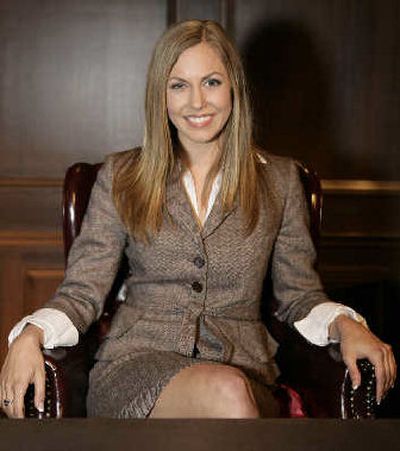Females missing in the boardroom

NEW YORK — On “The Apprentice,” Donald Trump’s infamous dimly lit boardroom is usually filled with men and women duking it out in business attire. But the reality is most boardrooms are devoid of the fairer sex altogether.
In 2003, women made up 13.6 percent of directors at Fortune 500 companies and 15.7 percent of all executive officers at those companies. Yet, according to the U.S. Department of Labor, 47 percent of all investors and 46 percent of the labor force are women. Where’s the girl power?
“When you put it all together, we’re making over 90 percent of consumer decisions,” says Linda K. Bolliger, founder and CEO of Boardroom Bound. “How could the boards be running so out of balance with who’s buying the products? How can you have companies whose exclusive trade is female and not have females on the board?”
That’s why in 2000 — before Enron or WorldCom fell — she started the nonprofit group Boardroom Bound.
“Two things were very apparent in the boards of the companies that had business scandals in 2002,” says Bolliger. “They were homogeneous. They were tilted toward big MBA schools and they really weren’t reflective of what America looked like.”
In short: They were old, white and manly — something Boardroom Bound hopes to change. Based in Washington, the group trains wannabes and plugs them into corporate board members’ social circles. More so, they serve up hopefuls to corporations who come calling, such as when then-Wyndham International, Inc. CEO Fred J. Kleisner sought a Hispanic woman with a finance background to serve on the hotel chain’s board to better represent the ethnicity of the company’s work force.
“He didn’t think we’d find such a person,” explains Boardroom Bound co-chair Phyllis Hill-Slater. “To his surprise and his pleasure, we not only found the one that we found but we found five others.”
Although women are the majority sex in the U.S., a recent study by Corporate Women Directors International said only two corporate boards contain a female majority: grocery store chain Albertson’s Inc. (with six female board members out of 10) and bankers Golden West Financial Corp. (with five out of nine).
“It just makes good business sense,” says Hill-Slater. “If you were a Japanese car manufacturer and you were selling all your cars to Americans, it would make sense to have Americans on your board. It just so happens we’re talking about gender. But, at the end of the day, it’s more about the bottom line. The ethnicity is green. The gender is green.”
Inside a Financial District hotel conference room on a wind-swept day in November, a diverse group of more than 20 women and men gathered for Boardroom Bound’s Pipeline Seminar, a two-day cram session on everything a potential corporate board member needs to know — who to contact, what to put on your resume, when to campaign and where to network at a party. (The buffet is better than the bar, apparently.)
“If you’re trying to target my market, you have to understand how we think,” says Nicole Flowers, one of the seminar’s attendees. “What are the things we’re looking for? How can you be more effective if you’re not listening to us and if you do not have one of us on your boards or upper management?”
Flowers, a 24-year-old black Internet technology professional, aspires to one day serve on the corporate board of Goldman-Sachs, the Wall Street investment firm where first-season “Apprentice” runner-up Kwame Jackson once worked as an investment manager.
“If you’re not walking the talk and I’m not seeing myself within your organization,” says Flowers, “then you’re not being honest with yourself or with your stockholders at the end of the day.”